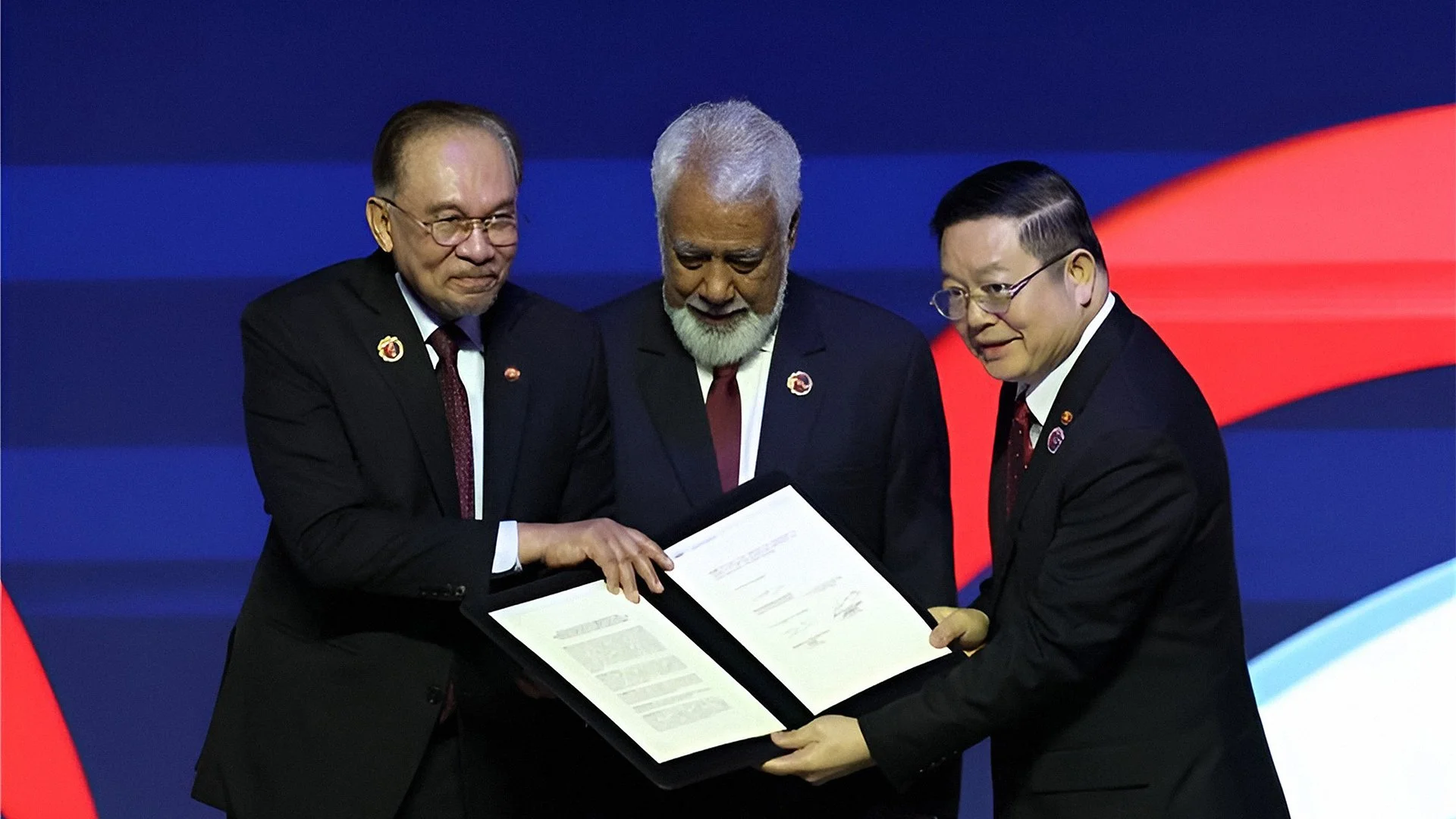Dream Realised: Timor‑Leste Becomes the Association of Southeast Asian Nations (ASEAN)’s 11th Member
What Just Happened?
On October 26, 2025, Timor-Leste officially joined ASEAN as its 11th member state — marking the first expansion of the bloc since the 1990s.
The formal admission took place at the opening of the 47th ASEAN Summit in Kuala Lumpur, Malaysia, where the country’s prime minister signed the Declaration on the Admission of Timor-Leste.
Why It’s Significant
Regional integration: For Timor-Leste, this step opens access to a regional market of over US$3.8 trillion in collective GDP.
Symbolic milestone: This is ASEAN’s first enlargement in more than 25 years, completing its “family” of Southeast Asian nations.
Economic opportunity: As a young democracy and one of Asia’s poorest nations, Timor-Leste sees membership as a chance to attract investment, boost trade, diversify its economy away from oil and gas, and improve livelihoods.

What They’re Saying
Prime Minister Kay Rala Xanana Gusmão called the moment “a dream realised … a powerful affirmation of our journey.”
Meanwhile, Ferdinand R. Marcos Jr. (President of the Philippines) said Timor-Leste’s admission demonstrates ASEAN’s commitment to unity, cooperation, and shared prosperity.
What This Means in Plain Terms (For Everyday People & Forex Traders)
For ordinary citizens: Membership means Timor-Leste can partake more fully in regional trade deals, receive greater foreign investment, and benefit from economic integration across Southeast Asia. These developments can lead to more jobs, improved infrastructure, and stronger local economies.
For Forex trading & global currency watchers: When a country joins a major regional bloc like ASEAN, investor confidence often improves, which can lead to currency flows into that country’s economy. Although Timor-Leste is still small on the global forex map, its entry signals strengthening regional cohesion — something currency traders in pairs like USD/SGD, USD/AUD, or USD/IDR may note as part of broader Asia-Pacific trends.
For the Philippines and other ASEAN countries: With Timor-Leste now a full member, regional policies, trade agreements, labor mobility, and investment opportunities may shift or expand — which can influence regional economic health, import/export flows, and indirectly affect currency exchange rates for neighboring countries.
Key Challenges Ahead
While the moment is celebratory, some hurdles remain:
Institutional capacity: Timor-Leste’s administrative infrastructure and economy are still developing; full participation in ASEAN initiatives will require sustained support.
Economic size and diversification: With a GDP of about US$2 billion (tiny compared to ASEAN’s overall size), the country must diversify beyond oil and gas and build resilience.
Integration tasks: From aligning with ASEAN trade agreements to implementing regional policies in governance, infrastructure and socio-cultural programs — the real work begins now.
Why It Matters for the Philippines & Your Wallet
As a Filipino or resident in the region, here’s why you might care:
Trade and investment flows may increase between Timor-Leste and other ASEAN members, including the Philippines, creating business or job opportunities.
Regional stability and integration tend to boost investor confidence in Southeast Asia, which can make ASEAN currencies (and therefore exchange rates) more stable — benefiting travelers, OFWs, and traders alike.
If regional economies strengthen and intra-ASEAN trade expands, Philippine exporters or service industries might gain new markets, which can feed into national growth and currency strength.
What to Watch Next
Implementation of ASEAN trade & investment frameworks involving Timor-Leste (e.g., tariffs, free-trade zones, mobility of labor).
Infrastructure and institutional reforms in Timor-Leste as it aligns with ASEAN economic standards and policies.
How neighboring ASEAN economies respond — whether they ramp up development cooperation, investment or trade with the new member.
Broader regional economic indicators: as ASEAN grows more cohesive, Asia-Pacific currencies may benefit from stronger growth sentiment.
Final Thoughts
Today marks a new chapter — not just for Timor-Leste, but for the entire Southeast Asian region. Its accession as ASEAN’s 11th member signals both hope and challenge: hope for deeper integration, and a challenge in turning that into tangible economic outcomes.
For anyone learning about global markets, regional economics or Forex trading, this story is perfect from the educational perspective: it shows how political decisions, economic strategy, and regional partnerships can influence growth trajectories — and in turn, currency movements and regional trade patterns.
If you’re curious to explore how regional developments like this affect currencies and trading opportunities, join our free workshop at GME Academy.
Let’s learn together how to spot opportunities when change happens in real time.

